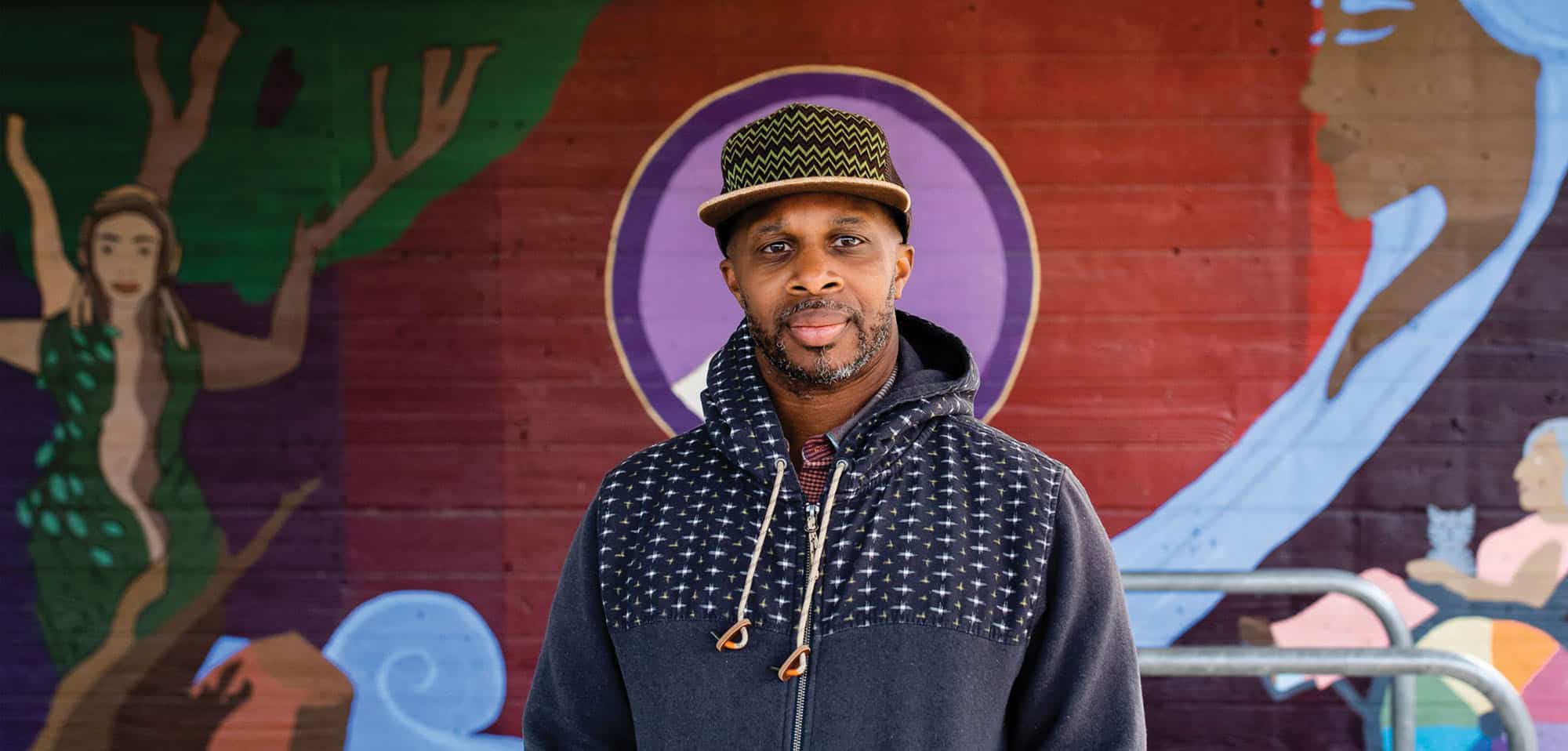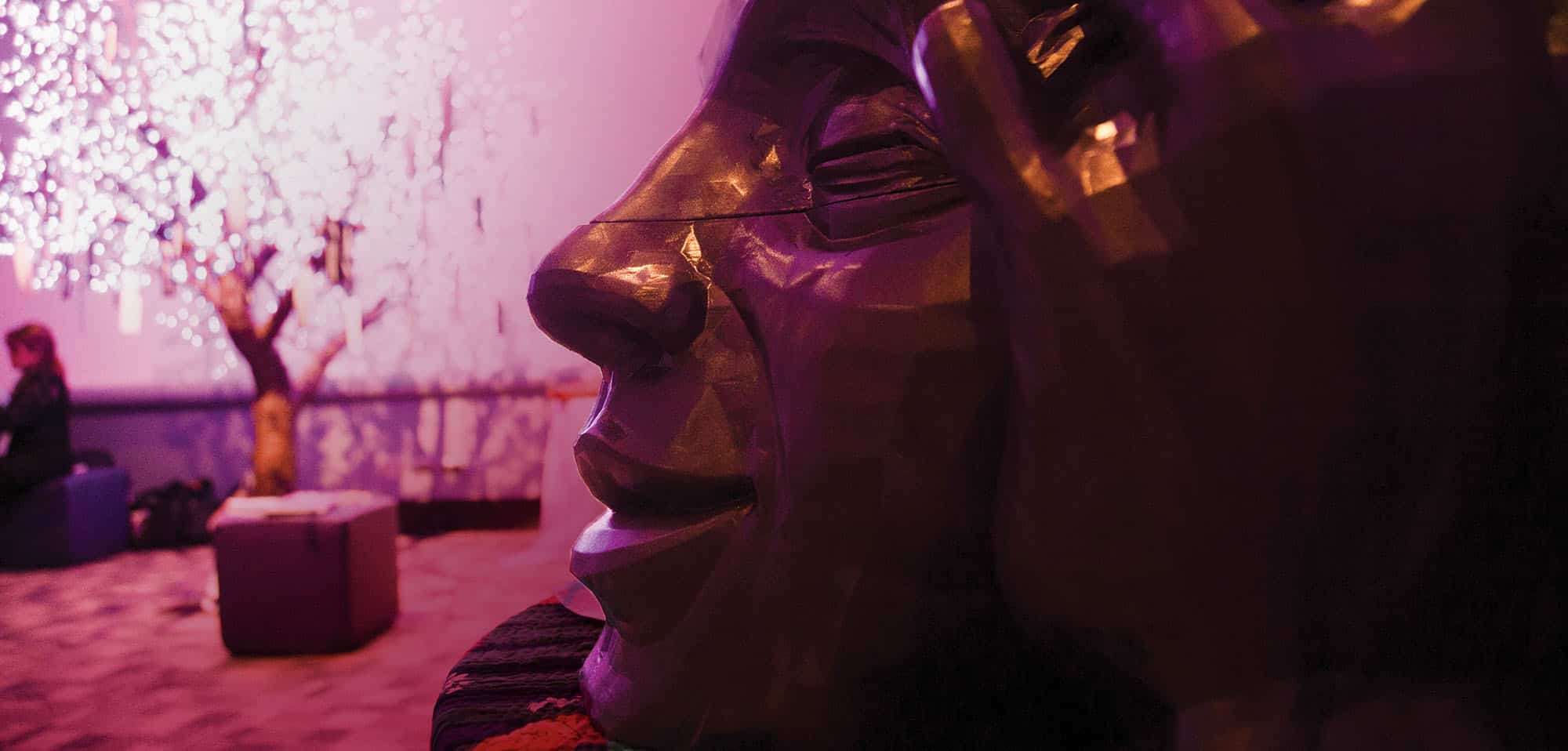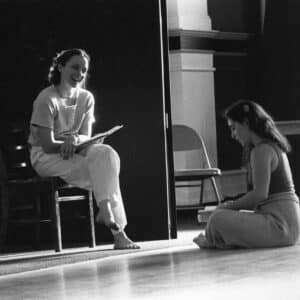
Naropa University was born from the belief that blending Eastern meditative practices with Western academic disciplines would bring forth new ways of seeing and being in the world. In Naropa’s early days, Trungpa Rinpoche recognized the power of the arts and explored the dynamism between artistic creativity and meditative awareness. Barbara Dilley, former Naropa President and founder of Naropa’s Dance/ Movement program, was deeply inspired by this intention of merging meditation and artistic practice and innovatively applied it to her own area of expertise—dance.
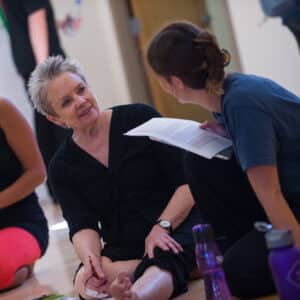
Dilley came to Naropa in 1974 already a luminary in the world of dance. Trained in ballet and having studied and performed in New York City from 1960 to 1975, she collaborated with iconic figures and groups such as Merce Cunningham Dance Company, Yvonne Rainer, and the Grand Union, pushing the boundaries of improvisation in dance and theater.
Dilley remembers the initial ask to come to teach at Naropa as “a mind-changing, life-changing invitation.” After years of focus on movement, at Naropa, she was asked to take a seat. As a self- described “neurotic dancer,” the stillness of the meditation cushion was out of her comfort zone. She explains, “The first time I practiced, it was recommended that you practice for one hour, which seemed like a really long amount of time to me. So I put a clock on this table at the other end of the room and sat on the cushion and basically watched the clock.”
Despite initial discomfort with sitting still, Dilley was captivated by the Buddhist teachings she encountered at Naropa. “For me, there was a lot of fascination with this intellectual investigation of how mind-body works through this lens of Tibetan Buddhism. I was completely enthralled with it, the emotional contact, how emotions arose, the perceptual awareness, the distortion of perceptions, all that kind of situation.”
With her extensive dance training and newly sparked passion for Buddhist philosophy, Dilley started experimenting with how to blend the two in an academic setting. The classroom became a “research laboratory” for her and her students to attempt to make a connection in their own body-mind between meditation and movement. The experiments conducted in this laboratory eventually led to the development of a teaching and learning form called Contemplative Dance Practice (CDP).
Contemplative Dance Practice
The genesis of CDP can be traced back to the adaptation of day-long group meditation sessions called nyinthüns. CDP is both a “Dancer’s Meditation Hall and a Meditator’s Dance Hall,” says Dilley—embodying Trungpa Rinpoche’s wisdom of finding the present moment through the synchronization of body and mind.
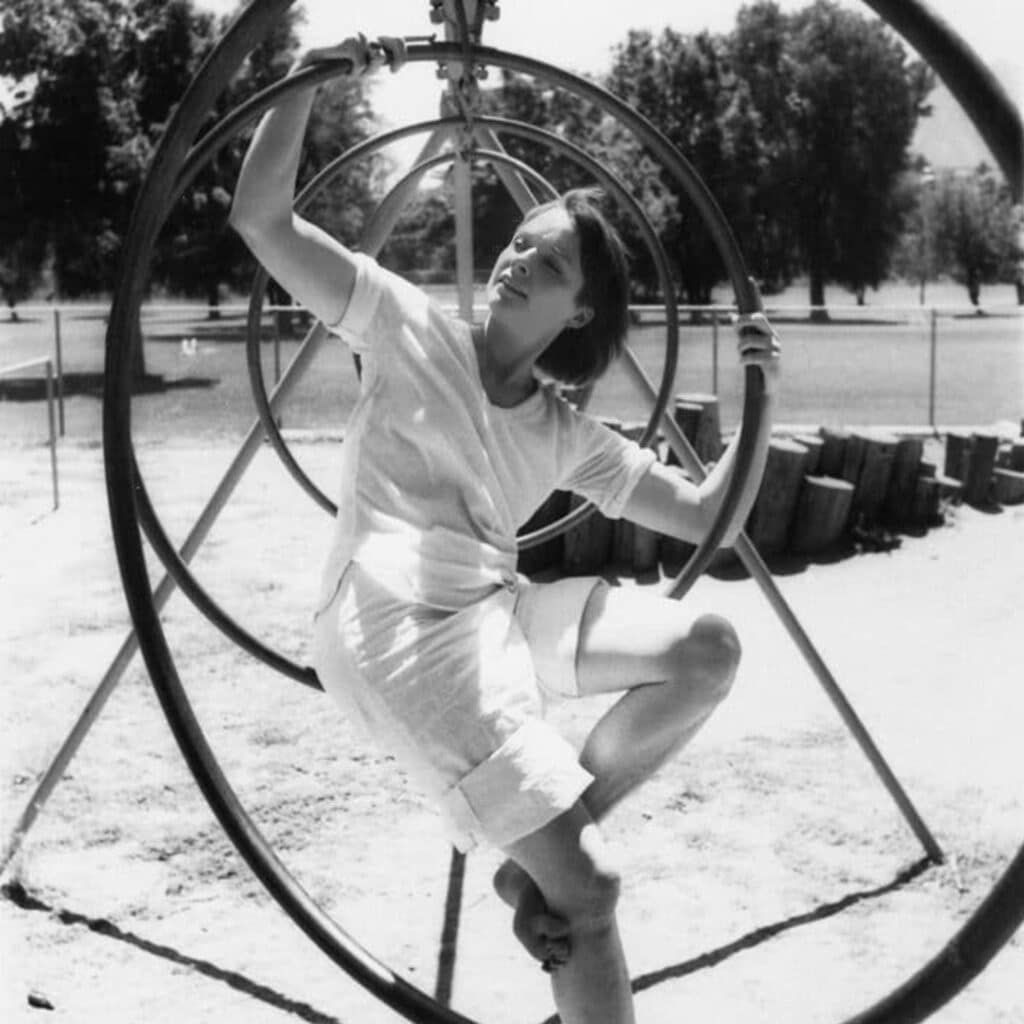
The form of CDP requires an open room, reminiscent of meditation halls, adorned with cushions, chairs, or benches for seated meditation. A subtle bell marks the beginning and end, creating a sacred space or container for the practice. The instructions aim to integrate the art of sitting practice with movement research, inviting practitioners to explore the delicate balance of being alone and together.
Dilley explains, “The underlying motivation was to let each person find their own connection between the stillness of sitting, posture, and movement to study what happens to your body-mind as you come out into the open. You have a chance to work alone and together. That was something that came to me out of being in the nyinthüns—we were all alone together in that shrine room for three hours. It was never face-to-face. So when I was teaching CDP, I would talk about being alone and together and ask ‘What is that membrane or atmosphere between you and other?’”
The practice of Contemplative Dance Practice includes several distinct stages. It begins with the Opening Circle, where participants initiate the session with a bow, inviting a sense of togetherness. Introductions and a brief overview set the tone, preparing individuals for the exploration ahead. The session then transitions into Sitting Meditation, initiated by a resonating meditation bell. Here, practitioners are guided into a state of relaxation, focusing on breath sensations and noticing subtle micro-movements.
The practice then progresses to Personal Awareness Practice (PAP), marking a shift from stillness to movement. This phase encourages participants to explore meditative awareness in motion, fostering self-care, research, and spontaneity. The incorporation of kinesthetic delight and carefully curated sound environments supports individual self-discovery.
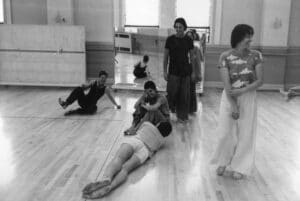
Open Space then follows: each practitioner enters the space with a bow. This phase often stirs emotions and thoughts, which the dancer is encouraged to embrace. The practitioner is invited to take on the role of host to the present moment and track where their awareness leads. This naturally accentuates the role of the practitioner as a host to the unfolding moment. Freedom to enter and exit is granted, and there is a steadfast commitment to self-responsibility and non-harm. During this stage of the practice, Dilley would guide students by asking questions like, “Who do you meet when you come into the space? What is your relationship with? Whoever else shows up there, do you work with them or do you turn and go away?”
CDP then culminates in the Closing Circle and Discussion. Participants gather for reflective discourse, sharing their unique experiences. Once personal perspectives have been shared, the session concludes with a collective bow, marking the end while announcing the commencement of the next contemplative practice session.
Evolution of CDP
CDP was first taught in a four-week curriculum during Naropa’s 1980 summer session. Since then, it has been taught in a variety of Naropa academic programs and as a stand-alone workshop series offered to the local community. When Naropa launched its MFA in Contemporary Performance in 2005, CDP became an integral part of the program.
Dilley explains that many of her MFA students now offer it in their own teaching world. She says, “They get in touch with me, and ask me questions about it and share with me the evolution. I think that that kind of openness is really one of the things that makes Naropa useful for people—that there’s no rigidity, but there is a container. And that seems important, the evolutionary aspect of it.”
Below, we hear from several of Barbara’s past students who exemplify this evolution, each offering a unique perspective on how this practice has permeated diverse contexts and cultures, fostering creativity, resilience, and community.
Damaris Webb, (MFA Contemporary Performance, ‘08) | Theater Maker as Social Justice Advocate
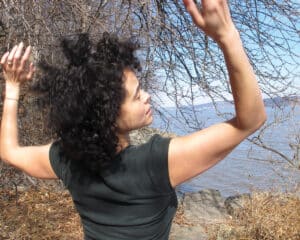
What great good fortune to receive this practice from its originator Barbara Dilley during the time I attended the Contemporary Performance MFA. It has been my pleasure to instigate and support ongoing practice groups in NYC and Portland, Oregon (where I now live), offering workshops with cohorts as far away as Greece, and as nearby as the church down the street. Indeed, there are many practice groups internationally, and perhaps even in the place where you live.
The form is resilient, accommodating, a dear friend, and never the same thing twice. A sacred and secular container to “read the signs,” acting as an interface between meditative training and improvisation. The Portland, Oregon “play pod” meets for three hours on a weekly basis. A seven to 10-week play pod is held in spring, fall, and winter. Once a year, a pod begins with three sessions of formal “introduction to the forms and supporting culture,” which is open to people who are curious about joining.
Poem by Damaris Webb
we are a continuous practice group, a sangha, with revolving space holders supporting basic goodness and the practice of play for play’s sake
meeting in open space, where forms of deep play intersect
you are invited to show up just as you are alone / together
in duets, trio, quad and ensemble moments arising and receding
space is filled with stories
picking up, putting down, boycotting and yielding completely
while bringing along everything synchronizing body and mind in the present moment
everything is welcome here:
the musings and movement
and stillness
the dull ache in your shoulder, the outrageous beauty of the world, and yes – even the overwhelming anger
what a relief!
a willingness to return to the breath
a willingness to yield to the posture
a willingness to suspend judgment
a willingness to cultivate a gentle and open curiosity
a willingness to make friends with oneself beginning again, and again, and again continuous present
Darlene Lorrain (BA Dance Therapy, ‘86) | Naropa/Alaya Preschool Staff, Former Adjunct Faculty
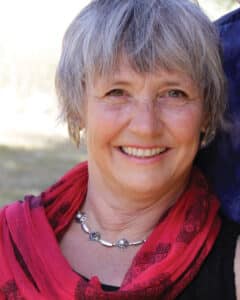
I first had the good fortune of studying Contemplative Dance Practice (CDP) with Barbara Dilley at Naropa in 1984 while pursuing a Dance Therapy BA degree. After previous decades of dance and years of Contact Improvisation, I found that Barbara’s teaching and CDP gave me a new and inspiring sense of space and creativity. CDP was a kinesthetic research tool that introduced me to a new way of seeing and experiencing the world and life. It helped to synchronize my own body, mind, and spirit and to work with my critical mind and habitual movement, cultivating a sense of presence and openness in the moment.
I soon began adapting CDP Heritage Practices and CDP Red Square practice in classes for
preschoolers to adults, for creativity, space awareness, and teacher training. I taught CDP in India, Greece, and online, as well as in Naropa’s Early Childhood Education BA and MA in Education programs. In 2000, I missed having a CDP community I personally could practice with, so I started facilitating a Naropa community practice that is still active today. It continues to be a place to slow down, open, play, be curious and surprised, and where “the unknown becomes a friend.” The profoundness of this simple form seems to hold all expression without bias, to help us examine our own obstacles, and to invite creativity on the spot “alone and together.” Participants feel it is inspiring and informing for them, developing compassion, giving permission, offering a fresh view of self, of other and the world, and discovering, as Barbara says, “kinesthetic delight.”
Anna Tzakou, PhD (MFA Theater: Contemporary Performance, ‘10) | Performer, Theatre Director, Practice-Based Researcher (PhD in Performance Practice)
I am a performer and theater deviser from Athens, Greece. In 2008, I was awarded a Fulbright scholarship to attend the MFA Theater: Contemporary Performance program at Naropa University. During the two years of study, I was trained in Contemplative Dance Practice (CDP) by Barbara Dilley. CDP training encouraged me to investigate the creative process as a laboratory, allowing me to work without knowing and perform from a place of responding rather than doing. The performance act was revealed as a space/time continuum where narratives of self (-ves) and space could be suspended and explored anew.
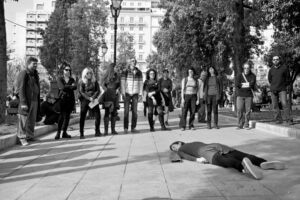
In 2010, when I returned to Athens, the Greek crisis had just started diffusing all socioeconomic and political aspects of life. The specific historical time pushed me to question matters of ‘identity,’ ‘home,’ and ‘belongingness.’ I saw the landscape as an alley, a cultural arena where CDP training could explore such large-scale narratives through the embodied experience. Practicing CDP outdoors became a way to investigate place through events of connectivity rather than detachment.
Since then, I have been employing CDP as a performance training and devising tool for teaching, researching, and creating in indoor and outdoor settings. CDP initiates a creative action from a place of being and unfolds it as an ‘activity of non-aggression.’ It prioritizes the felt-sense experience of the space reinforcing a way of understanding it that comes from the heart. Within the historical circumstance of the Greek crisis, CDP operated as a container to elaborate a landscape of conflict, discord, and rupture discovering loveliness amidst distress and restoring the dreaming of us within the world.
Barbara Dilley’s memoir and hand- book, This Very Moment: teaching thinking dancing (2015), published by Naropa University Press, provides a deeper insight into her journey and the evolution of Contemplative Dance Practice. Interested readers can explore more at barbaradilley.com, delving into her experiences and the wisdom she imparts.

